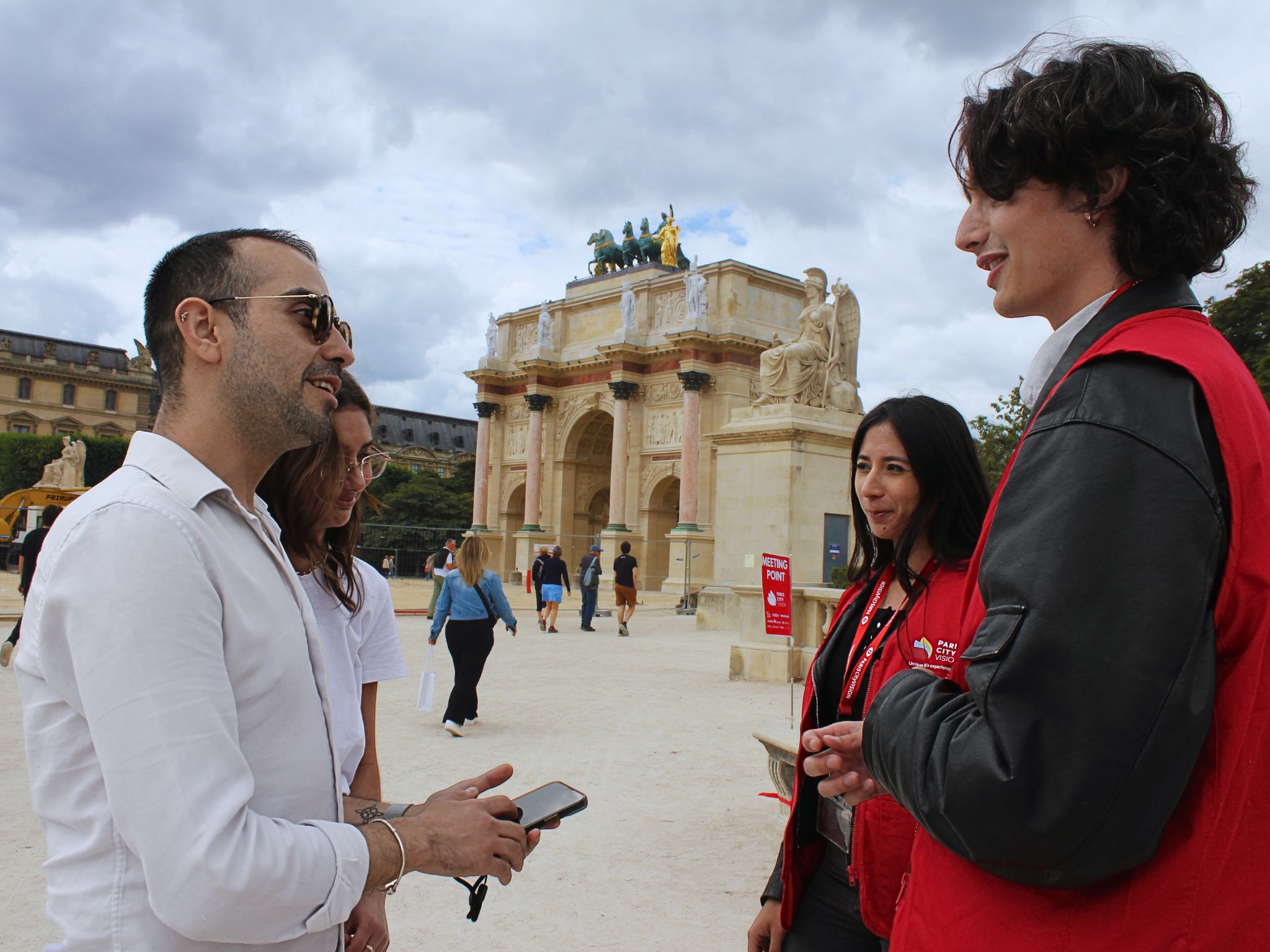Madonna of the Rocks by Leonardo Da Vinci
This masterpiece is one of the major works on display at the Louvre. Executed by Leonardo Da Vinci and the brothers Evangelista and Ambrogio de Predis, the painting was commissioned in 1483 by the Franciscan Confrateternity of the Immaculate Conception to adorn a chapel in the San Francesco Grande church in Milan. The oil on panels was intended to be the centerpiece of a triptych.
Another, later version of the painting also exists and is on view at the National Gallery of London. This second painting found in the Confraternity's chapel indicates that the first version, which is now on exhibit at the Louvre, was never hung in the chapel.

A work that is open to interpretation
This piece celebrates the mystery of the incarnation with depictions of Mary, Jesus Christ and Saint John the Baptist.
The patrons who ordered the oil-on-panel work had provided very specific instructions regarding its dimensions. Indeed, it was meant to be displayed in a wooden alcove that had already been sculpted. The subject in the painting is interesting, for it does not portray an episode from the Gospels and therefore is open to interpretation. The Madonna of the Rocks references a legend that recounts the meeting between Saint John the Baptist and Jesus during their exile from Egypt. God had placed the orphaned John the Baptist under the protection of the archangel Uriel. They met in a cave, which is where the archangel Uriel asked Mary to take John the Baptist into her care. John the Baptist features prominently in the painting: the archangel Uriel points to him as he sits right next to Mary.
Production of a second version
The confraternity was not satisfied when the oil on panel was delivered. Because of John the Baptist's size, his position next to Mary and the placement of Jesus, it was too easy to confuse the two children. Thus, the Madonna of the Rocks painting was rejected and never installed in the triptych where it was meant to be displayed.
It would take Da Vinci over 20 years to produce a second painting. In fact, it painted by Ambrogio de Predis between 1495 and 1508 under the tutelage of Leonardo Da Vinci to replace the first.
This second version, which is on display at the National Gallery of London, is quite different from the first. It emphasizes the identities of the two children: a halo hovers above Jesus's head and a cross is painted in the hands of Saint John the Baptist. Finally, the hand of the archangel pointing to John the Baptist has been removed. This is the canvas that was placed at the center of the chapel in the San Francesco Grande church in Milan.
Because the initial work had been rejected by its sponsors, it was easily acquired by Louis XII between 1500 and 1503, when it joined the art collection of France. To see the work in person, head to the first floor of the Denon Wing in the Louvre and make your way to Gallery 5.


